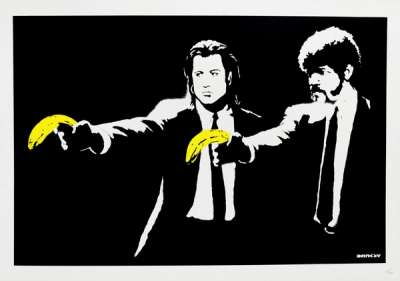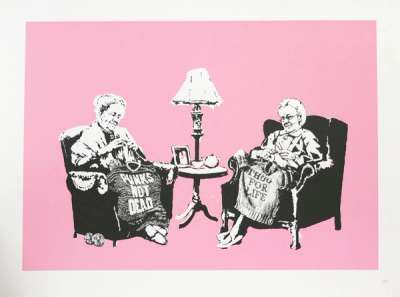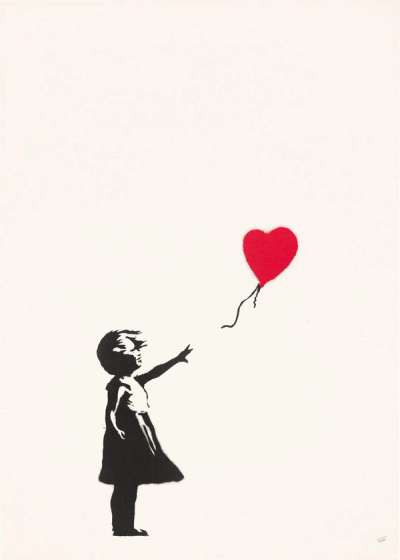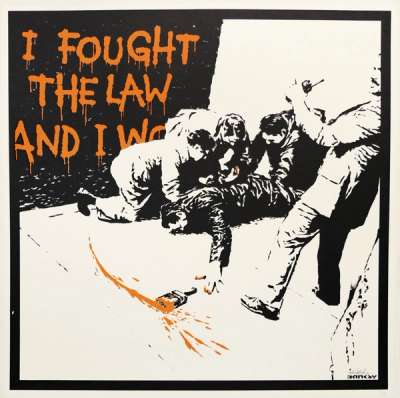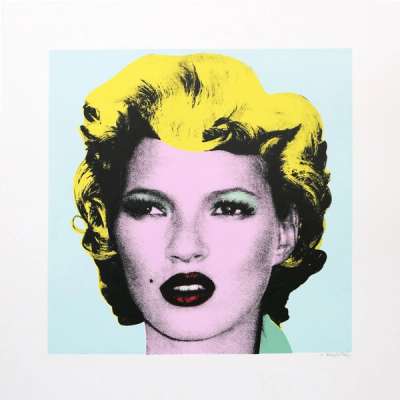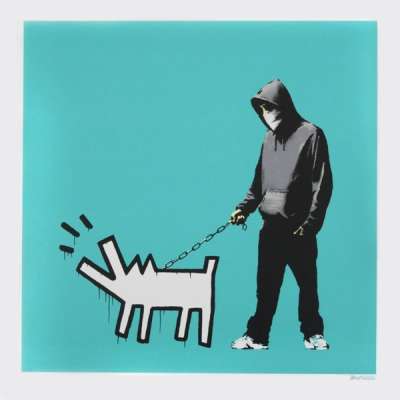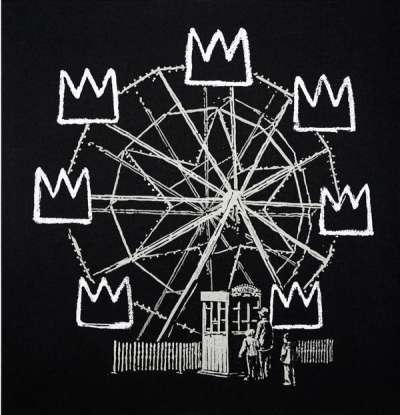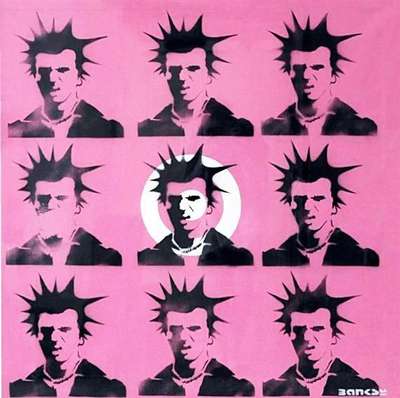Banksy's Oh My God

 Oh My God © Banksy 2006
Oh My God © Banksy 2006
Banksy
269 works
Banksy's Oh My God stands as a piercing exposé of the art industry's self-absorbed tendencies. Sprayed onto a 92x130cm piece of metal in 2006, this work is a hallmark of the artist's seminal Barely Legal exhibition in the United States. Referencing Roy Lichtenstein, it presents a woman, depicted in the artist’s celebrated stencil technique, beneath a brazen commentary that deftly satirises the narcissism rife within today's creative expressions.
Oh My God Meaning & Analysis
Embedded in the context of Banksy’s first major American exhibition, Oh My God serves as a signed testament to the artist's skill at satire and his zest for experimentation. The image of a woman – styled in the hallmark of Banksy’s stencilling but in a clear reference to Lichtenstein’s Girls – is paired with a red, scrawled mockery that critiques the egocentric and superficial tendencies that often underlie contemporary artistic practices. “Oh my God, that’s so cute. The way you just draw on stuff and think about yourself all the time,” the painting jests, with words that seem to echo the subject's thoughts. This blend of visual and textual narrative offers a stark, tongue-in-cheek dissection of the art world’s internal monologue – one similar to Lichtenstein’s work Masterpiece. The contrast between the woman's pensive expression and the flippant critique blurs the boundary between art and spectator. Banksy's choice of a monochrome palette, punctuated by the red text, draws the eye and underscores the message. The artwork becomes a conversation piece, demanding interpretation and introspection about the role of art in societal reflection.
As an artist known for his political engagement and activism, Banksy not only casts a critical eye but also summons a dialogue about redirecting creative energies towards socially conscious artistry. The use of a found piece of metal as the canvas anchors the work in Banksy's roots—urban environments rich with narrative, often dismissed when not acting as backdrops for unsanctioned graffiti. By repurposing an everyday object, Banksy challenges the established hierarchy that separates 'legitimate' art from street expression. This metal, once part of the city's unnoticed landscape, is now the foundation for a piece that commands attention and provokes thought. In this way, Banksy's ingenuity in transforming the mundane into the extraordinary shines through. The artist has long demonstrated a fascination with the interplay between object and space, where the discarded and overlooked are reimagined as conduits of potent messages. This approach has not only defined his style but also reinforced his critique of the art world's sometimes myopic interpretation of what constitutes meaningful art. The use of found materials is quintessential Banksy as he elevates the ordinary, infusing it with fresh context and meaning. It's a practice that blurs the lines between 'high art' and the everyday, challenging preconceptions about value and creativity.
“By incorporating a blunt, mocking text alongside the image, Banksy not only nods to the conversational style of Lichtenstein but also prompts viewers to reflect on the role of art in society.”

Banksy's Sardonic Vision
Oh My God is also a reflection on the role of irony in art. Banksy employs it not merely as a stylistic device but as a scalpel to dissect the often pretentious nature of art consumption and production. This piece, dripping with irony both literally and metaphorically, encapsulates the artist's ability to communicate complex themes through seemingly simple juxtapositions. It encapsulates the essence of his street art heritage while engaging with the art world on its terms. It's an artwork that embodies the paradox of Banksy's career: an anti-establishment figure whose work is fervently collected by the establishment itself. The duality of Banksy's position as both outsider and insider is mirrored in the content and form of Oh My God.
Reflecting the artist’s unique ability to recycle apparently worthless objects and endow them with a new identity, the presence of a found piece of metal in the work supports the central message rendered in red letters. Serving as a basis for the spray-painting, the metal piece invokes the rough urban environment defining the roots of Banksy’s creative identity, one that has long stood in contrast to the establishment given the common perception of graffiti as a lawless practice. Banksy's growing fame enhances the value of his unique works like Oh My God, showcasing his early style and distinctively sardonic social commentary. First displayed at the pivotal "Barely Legal" exhibition, this piece embodies the essence of Banksy's appeal and marks a critical point in his career, offering collectors a rare acquisition opportunity.
Oh My God: Exhibition History
Barely Legal, Los Angeles, 2006
